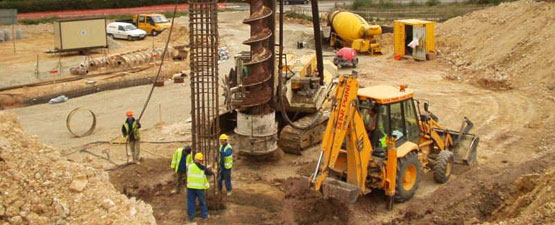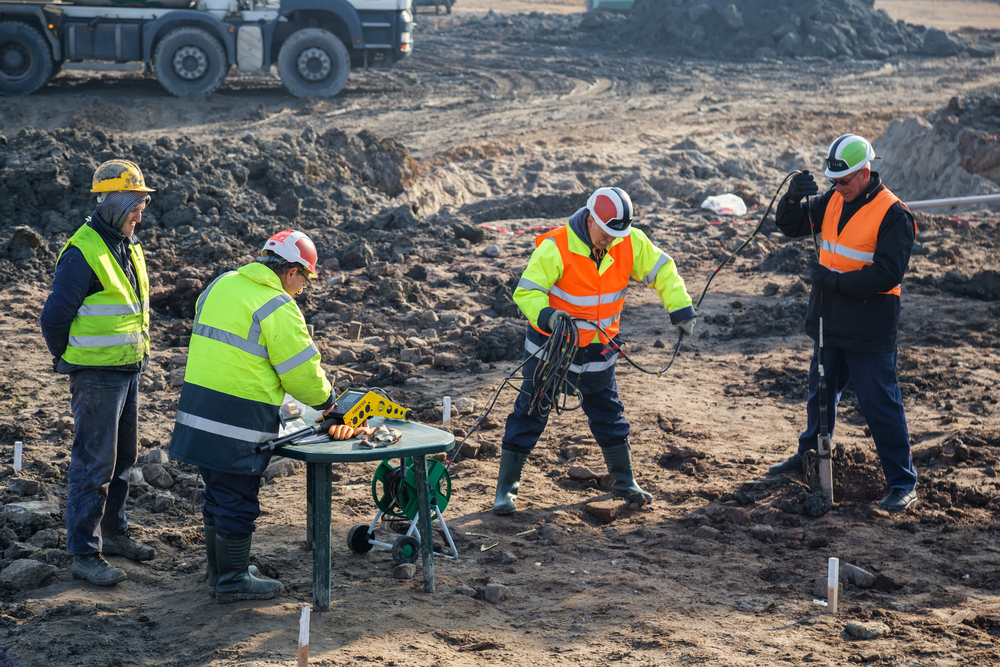The Greatest Guide To Geotheta
The Greatest Guide To Geotheta
Blog Article
Excitement About Geotheta
Table of ContentsWhat Does Geotheta Mean?What Does Geotheta Do?Geotheta Can Be Fun For EveryoneThings about Geotheta
They collaborate with civil engineers, structural designers, architects, and other specialists to integrate geotechnical considerations into the general project style and building process. This calls for reliable teamwork, coordination, and communication to make sure that the geotechnical facets align with the project goals and meet regulatory needs.Mining & Materials Engineering: Concepts of exploration, infiltration prices, and aspects influencing the option of drilling approach. Blasting techniques in surface area and below ground workings. Mechanical and continual strategies to fragmentation, consisting of longwall shearing and fullface boring.
Modelling of fragment and fragment size distributions; comminution as a transfer feature. Comminution innovation: squashing, grinding, dimension classification. Integrated analysis of fragmentation and comminution procedures. Used by: Mining & Materials Design.
Some Of Geotheta
Bachelor's level programs in civil, geotechnical, geological, and environmental design commonly last four years and include general education training courses in English, social scientific research, and the humanities, as well as courses in sophisticated maths, architectural geology, and liquid mineralogy. (https://www.easel.ly/browserEasel/14498559)
Geotechnical engineering involves the evaluation of the dirt and rock conditions at a particular website, and their implications for the advancement of that site. As the majority of structures rely upon the ground for support, it lacks surprise that an in-depth understanding of the ground conditions, and the viability of foundation systems, are vital to the long-lasting stability and efficiency of the building or framework.
Being experts in the examination of geological formations and ground practices, geotechnical designers carry out clinical examinations and screening to comprehend the effect these geological developments might carry the style and building and construction of structure, civil and facilities jobs. This competence is critical for the layout and building of buildings, roads, tunnels, dams, bridges, and water system and sewage systems.
The geotechnical group at Douglas Allies regularly seek advice from with architects, style engineers, designers, and contractors to make referrals on style and advancement propositions to make sure that the developed structures are appropriately made for the ground problems. For example, the style of footing systems needs to take into consideration the weight of the structure, the capacity of the ground to sustain that weight along with activity tolerances and reliable building.
Geotheta - An Overview
This task is significantly streamlined by the use of our Douglas Map geospatial system which makes this info readily available in a very easy to utilize internet browser interface. A geotechnical designer will guide the boring of boreholes and test pits to accumulate dirt and other samples, and additionally evaluate surface area features and ground direct exposures to form a geotechnical model of the subsurface conditions.
Depending upon the job type and ground problems came across, lab testing might to name a few points analyze strength, compressibility, reactivity and/or leaks in the structure of dirt and rock examples. After this data is gathered and collected, the results are used for a geotechnical model of the site, which is commonly provided as areas throughout the site.

A geotechnical examination naturally can only assess the ground conditions at the places pierced or excavated. All-natural variations in dirt and rock conditions can take place across a site and between test locations. It is as a result great technique that the geotechnical engineer be kept throughout building of the job to supply on-site confirmation that the ground problems encountered are constant with the expectations and suggestions given in the geotechnical examination record.
9 Easy Facts About Geotheta Described
Geotechnical engineers utilize their thorough understanding of soil and look at here now rock to evaluate danger and address troubles on varied facilities projectsGeotechnical design is a specialist branch of civil design which checks out the behaviour of planet products and the application of soil and rock auto mechanics. Consulting Engineers. As a geotechnical engineer, you will certainly analyze the physical, mechanical and chemical residential or commercial properties of dirt and rock in order to make structures, retaining frameworks and earthworks
Geotechnical design is closely linked to and overlaps with, both design geology and ground engineering - https://www.metal-archives.com/users/geotheta. It's feasible to be experts in geotechnics or help a geotechnical company yet be understood as an engineering geologist or a ground designer. As a geotechnical engineer, you'll need to: construct and keep relationships with clients and other specialists entailed in the website, throughout each projectmaintain safety requirements on website be conscious of expense ramifications when you make recommendationsstudy geological maps and airborne photographs from a series of sources and from various time periodsexamine building prepares to see exactly how possible they are based on your understanding of the siteinvestigate risks or geological dangers for the sitesearch for environmentally sensitive features, such as land fill start to establish factual and expository ground modelsplan area investigationsdrill and evaluate samples of bedrock, dirt, groundwater and additional materials monitor various other professionals on sitesolve technical concerns as they develop, such as unexpected frameworks at drill sitesmonitor conditions during and after building and construction to make certain frameworks are steady in the brief and lengthy termadding data gathered on website to your initial researchcreating geotechnical computations, drawings, and 2 or three-dimensional computer system designs translating the datamaking recommendations regarding the recommended use the site

Report this page